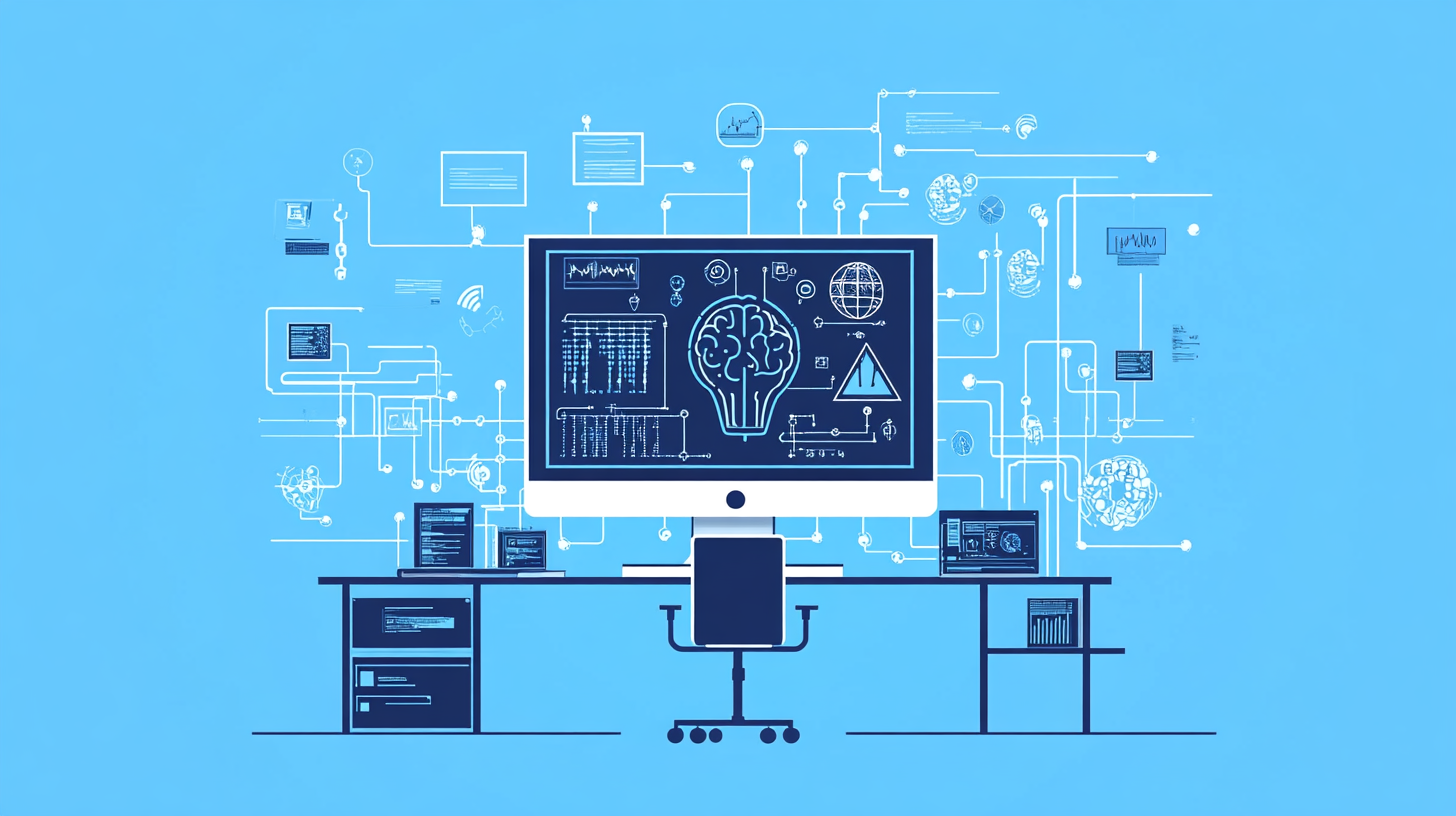Machine Learning Operations (MLOps) on Azure: Best Practices

MLOps, the integration of machine learning and operations, is transforming contemporary data science by applying DevOps principles to the machine learning lifecycle, thereby boosting efficiency and reliability. Azure ML emerges as a powerful platform for executing MLOps, providing tools that optimize machine learning workflows. Adhering to best practices in MLOps guarantees scalable, reliable, and compliant AI models. These practices build trust in AI solutions, rendering them essential in our data-driven era.
Understanding MLOps
Definition and Scope
Machine Learning Operations (MLOps) represents a set of practices that streamline the development, deployment, and maintenance of machine learning models. MLOps integrates principles from DevOps to enhance the efficiency of machine learning workflows. The scope of MLOps encompasses the entire lifecycle of machine learning models, from data preparation to model deployment.
Key Components of MLOps
MLOps consists of several key components:
Data Management: Ensures the availability and quality of data for training models.
Model Training: Involves creating and refining machine learning models.
Deployment: Focuses on integrating models into production environments.
Monitoring: Tracks model performance and identifies potential issues.
Benefits of Implementing MLOps
Implementing MLOps provides numerous benefits:
Efficiency: Streamlines processes, reducing time to market for machine learning solutions.
Scalability: Supports the growth and adaptation of machine learning systems.
Reliability: Ensures consistent performance and reduces the risk of errors.
Challenges in MLOps
MLOps presents several challenges that organizations must address to achieve successful implementation.
Common Obstacles
Organizations often face common obstacles in MLOps:
Data Silos: Fragmented data sources hinder model development.
Complex Workflows: Intricate processes complicate model deployment.
Collaboration Barriers: Lack of communication between teams affects project outcomes.
Solutions and Mitigations
Solutions and mitigations for these challenges include:
Unified Data Platforms: Consolidate data sources to improve accessibility.
Automated Pipelines: Simplify workflows through automation.
Cross-Functional Teams: Foster collaboration between data scientists and DevOps engineers.
Case Studies:
MLOps Practices in Industry 4.0 Companies: Large companies have successfully implemented MLOps by addressing data silos and enhancing collaboration.
Adoption of MLOps in Healthcare: Healthcare organizations use MLOps to create reliable models for diagnosis and treatment, overcoming complex workflows through automation.
Azure for Machine Learning Workflows

Overview of Azure ML Services
Azure ML provides a comprehensive suite of tools for managing machine learning workflows. Users can build, train, and deploy models using a unified platform. The service offers flexibility for handling the entire lifecycle of machine learning projects.
Key Features
End-to-End Solution: Azure ML supports every stage of the machine learning process. Users can manage experiments, pipelines, and compute resources efficiently.
Asset Management: Azure ML includes tools for managing datasets, conda environments, and docker images. These tools help streamline the development process.
Automation: Automated Machine Learning (AutoML) capabilities reduce the complexity of model training. Users can compare multiple models to select the best-performing one.
Integration with Other Azure Services
Azure ML integrates seamlessly with other Azure services. This integration enhances the functionality of machine learning workflows. Users can leverage Azure's ecosystem for data storage, compute power, and security.
Data Storage: Azure provides robust data storage solutions. Users can access and manage large datasets effortlessly.
Compute Power: Azure's scalable compute resources support intensive model training tasks. Users can optimize performance based on project needs.
Security: Azure ensures data protection and compliance. Users can maintain privacy and adhere to industry standards.
Setting Up Azure for MLOps
Setting up Azure for MLOps involves configuring the environment and managing resources effectively. Proper setup ensures smooth operation and scalability.
Initial Configuration
Initial configuration requires setting up a workspace in Azure ML Studio. Users create and organize projects within this workspace. The setup process includes defining compute targets and establishing data connections.
Workspace Creation: Users establish a centralized location for managing machine learning assets. This workspace serves as the foundation for all projects.
Compute Targets: Users define the compute resources needed for training and deployment. Azure offers various options, including CPUs and GPUs.
Data Connections: Users connect to data sources for seamless integration. Azure supports diverse data formats and storage solutions.
Resource Management
Resource management is crucial for optimizing performance and cost-efficiency. Users must monitor and adjust resources based on project requirements.
Scalability: Azure allows users to scale resources dynamically. This flexibility supports varying workloads and ensures efficient use of resources.
Cost Management: Users can track resource usage and expenses. Azure provides tools for monitoring and controlling costs effectively.
Performance Optimization: Users can fine-tune configurations to enhance performance. Azure offers insights and recommendations for improving efficiency.
Best Practices for MLOps on Azure
Model Development and Deployment
Continuous Integration and Continuous Deployment (CI/CD)
Continuous Integration and Continuous Deployment (CI/CD) enhance the reliability of machine learning models. Platforms like Jenkins, GitHub Actions, and Argo CD support these practices. CI/CD ensures models undergo quality checks, testing, and monitoring before deployment. This process fosters rapid experimentation and adaptation to changing data and business needs.
Version Control and Experiment Tracking
Version control and experiment tracking are vital for managing model iterations. Tools like Git and Azure Machine Learning help track changes in code and data. These tools enable teams to reproduce experiments and compare results. This practice improves collaboration and transparency among team members.
Monitoring and Maintenance
Performance Monitoring
Performance monitoring ensures models operate effectively in production. Azure provides tools to track metrics such as accuracy and latency. Regular monitoring helps identify issues early and maintain model performance. This practice supports continuous improvement and adaptation to new data.
Automated Alerts and Feedback Loops
Automated alerts notify teams of potential problems in real-time. Azure's alerting systems can trigger responses to anomalies or failures. Feedback loops allow models to learn from new data and improve over time. This approach enhances model robustness and reliability.
Security and Compliance
Data Privacy and Protection
Data privacy and protection are crucial in MLOps. Azure offers encryption and access controls to safeguard sensitive information. Implementing these measures ensures compliance with data protection regulations. Organizations can build trust with users by maintaining high security standards.
Compliance with Industry Standards
Compliance with industry standards is essential for legal and ethical reasons. Azure provides tools to ensure adherence to regulations like GDPR and HIPAA. Following these standards helps organizations avoid legal issues and maintain credibility. This practice supports responsible AI deployment.
MLOps best practices enhance the quality and consistency of machine learning solutions. Azure Machine Learning provides essential tools for managing model lifecycles effectively. Organizations should leverage these capabilities to optimize scalability and performance. MLOps bridges data science and operations, ensuring reliability and compliance. The future of MLOps promises further integration and efficiency in AI deployment. Embracing these practices will position enterprises at the forefront of innovation in the industry.
See Also
Utilizing Azure's GPU-powered VMs for Deep Learning Deployment
Leveraging Azure AI for Natural Language Processing Tasks
Maximizing Cost Efficiency in Azure Cloud Infrastructure
Implementing Continuous Integration in Data Science with Azure Pipelines
